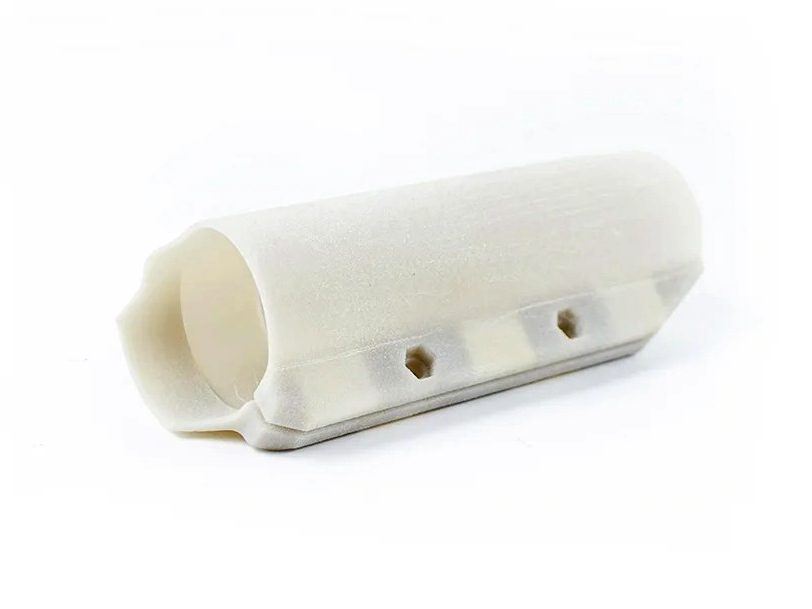Resin 3D Printing: High-Detail and Smooth Finish for Custom Prototypes
Introduction to Resin 3D Printing
Resin 3D printing uses photopolymer resins to create highly detailed, smooth, and accurate prototypes and parts. The process is ideal for industries that require fine surface finishes and intricate geometries, such as dental, medical, automotive, and consumer products. Resin 3D printing offers exceptional resolution, making it perfect for applications where high detail and precision are crucial. This method produces prototypes with smooth surfaces and fine features that traditional manufacturing methods may struggle to achieve.
At Neway 3D Printing, we offer a range of high-quality resin materials, including Standard Resins, Tough Resins, and Flexible Resins, enabling us to produce custom parts with exceptional detail and smooth finishes for various applications.
Material Performance Matrix
Material | Temperature Resistance (°C) | Corrosion Resistance (ASTM B117 Salt Spray) | Wear Resistance (Pin-on-Disc Test) | Ultimate Tensile Strength (MPa) | Application |
|---|---|---|---|---|---|
70 | Good (800 hours) | Medium (CoF: 0.5) | 50 | Prototypes, Consumer Goods | |
90 | Good (1000 hours) | High (CoF: 0.35) | 60 | Automotive, Functional Prototypes | |
50 | Moderate (500 hours) | Low (CoF: 0.6) | 30 | Gaskets, Seals, Consumer Goods | |
70 | Excellent (3000 hours) | Medium (CoF: 0.4) | 40 | Dental, Medical Applications |
Material Selection Guide for Resin 3D Printing
When selecting resin materials for 3D printing, consider the following factors:
Temperature Resistance: Materials like Standard Resins (70°C) and Tough Resins (90°C) offer good performance for applications exposed to moderate temperatures. For more specialized uses, Dental Resins (70°C) are also ideal for dental and medical prototypes.
Corrosion Resistance: Materials like Dental Resins and Standard Resins offer excellent corrosion resistance, making them suitable for medical and consumer goods that may be exposed to environmental factors.
Wear Resistance: For applications subjected to friction, Tough Resins and Flexible Resins provide good wear resistance, while Flexible Resins offer a low coefficient of friction (CoF: 0.6), making them ideal for gaskets and seals.
Strength and Durability: Tough Resins (60 MPa tensile strength) offer higher durability, suitable for automotive and functional prototypes, while Standard Resins (50 MPa tensile strength) are perfect for prototyping consumer goods.
Process Category Matrix for Resin 3D Printing
Process | Material Compatibility | Build Speed | Precision | Surface Finish |
|---|---|---|---|---|
Standard Resins, Dental Resins, Flexible Resins | Moderate (30-60 mm/h) | Very High (±0.05mm) | Fine (Ra < 5 µm) | |
Standard Resins, Tough Resins | High (50-100 mm/h) | Very High (±0.05mm) | Fine (Ra < 10 µm) | |
Tough Resins, Flexible Resins | High (50-100 mm/h) | Very High (±0.05mm) | Smooth (Ra < 5 µm) | |
Tough Resins, Flexible Resins | Moderate (30-60 mm/h) | High (±0.1mm) | Smooth to Fine |
Process Performance Insights:
Stereolithography (SLA): Known for its high precision and fine surface finish (Ra < 5 µm), SLA is perfect for producing detailed prototypes in industries such as medical, dental, and consumer goods. It is widely used in applications requiring the highest surface finish level.
Digital Light Processing (DLP): DLP offers faster build speeds than SLA, making it ideal for producing functional prototypes and parts in various resins, including Tough Resins for automotive and industrial applications.
Multi Jet Fusion (MJF): MJF provides high precision, smooth surface finishes, and excellent mechanical properties. It is ideal for producing functional end-use parts for industries such as aerospace and automotive, where high-quality components are required.
Powder Bed Fusion (PBF): PBF offers excellent precision and smooth surface finishes, making it ideal for creating parts with intricate designs and complex geometries. It is commonly used for functional prototypes and production parts.
Process Selection Guide for Resin Parts
Stereolithography (SLA): Ideal for parts requiring high precision and smooth surfaces. SLA is best suited for medical, dental, and consumer product applications where fine details are essential.
Digital Light Processing (DLP): Best for high-speed production and fine detail, DLP is perfect for functional prototypes in automotive, industrial, and consumer goods applications.
Multi Jet Fusion (MJF): Recommended for high-performance parts with excellent strength and smooth surfaces. MJF is widely used in aerospace, automotive, and medical applications where production-grade parts are needed.
Powder Bed Fusion (PBF): Best for high-precision parts with complex geometries and smooth finishes. PBF is ideal for functional prototypes and end-use components in industries requiring detailed, durable parts.
Case In-Depth Analysis: Resin 3D Printed Automotive and Medical Components
Automotive Industry: We produced functional air intake systems for a major automotive client using Tough Resins via DLP. The material’s excellent mechanical properties and high precision enabled the production of lightweight, high-performance components that meet the automotive industry’s strict durability standards. The DLP process provided an impressive resolution, ensuring accurate fits and high-quality surface finishes critical in automotive applications.
Medical Industry: We partnered with a medical device manufacturer to produce surgical tool prototypes using Dental Resins via SLA. The material’s superior strength and biocompatibility, combined with SLA’s ability to achieve precise features, ensured the prototypes met the necessary performance standards. The fine details achieved through SLA are essential for medical devices, where accuracy and surface quality are paramount for patient safety and device functionality.
FAQs
What are the advantages of using resin materials for 3D printing in automotive applications?
How does SLA work with resin materials like Dental Resins and Tough Resins?
What are the best resin materials for high-precision prototypes in medical applications?
How does DLP improve the quality of resin components in consumer products?
What are the benefits of using flexible resins for prototyping in various industries?

